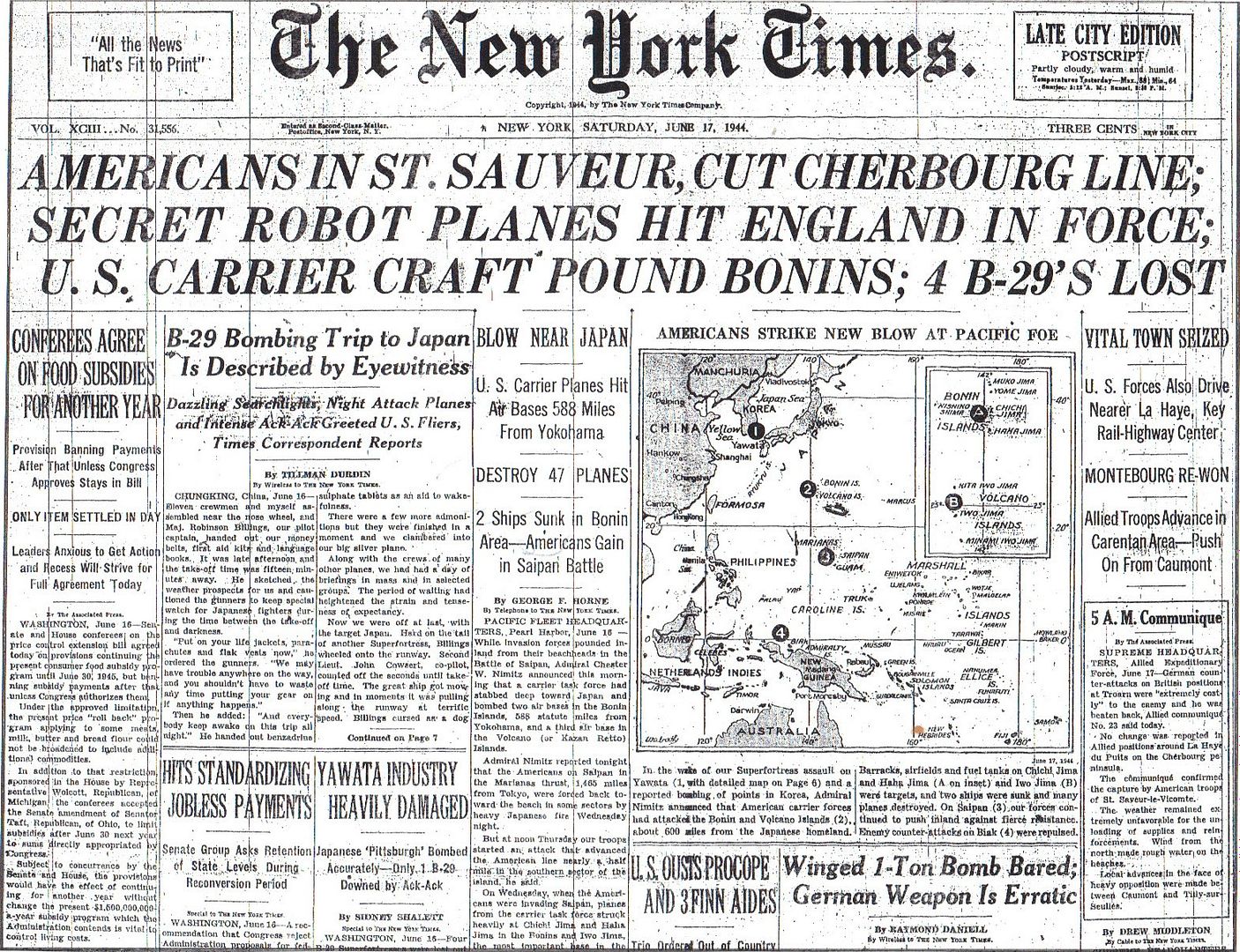
Posted on 06/17/2014 4:57:07 AM PDT by Homer_J_Simpson





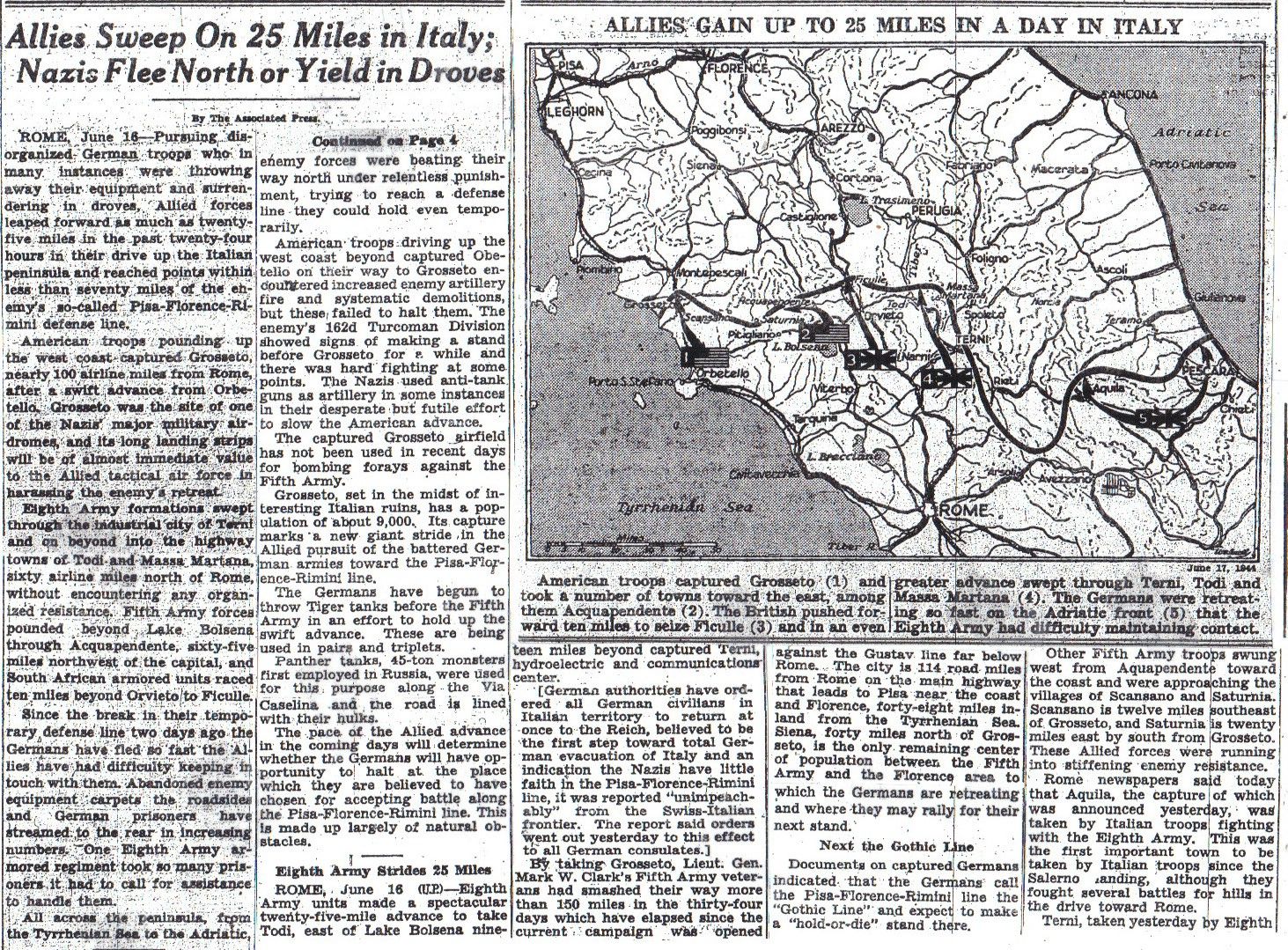
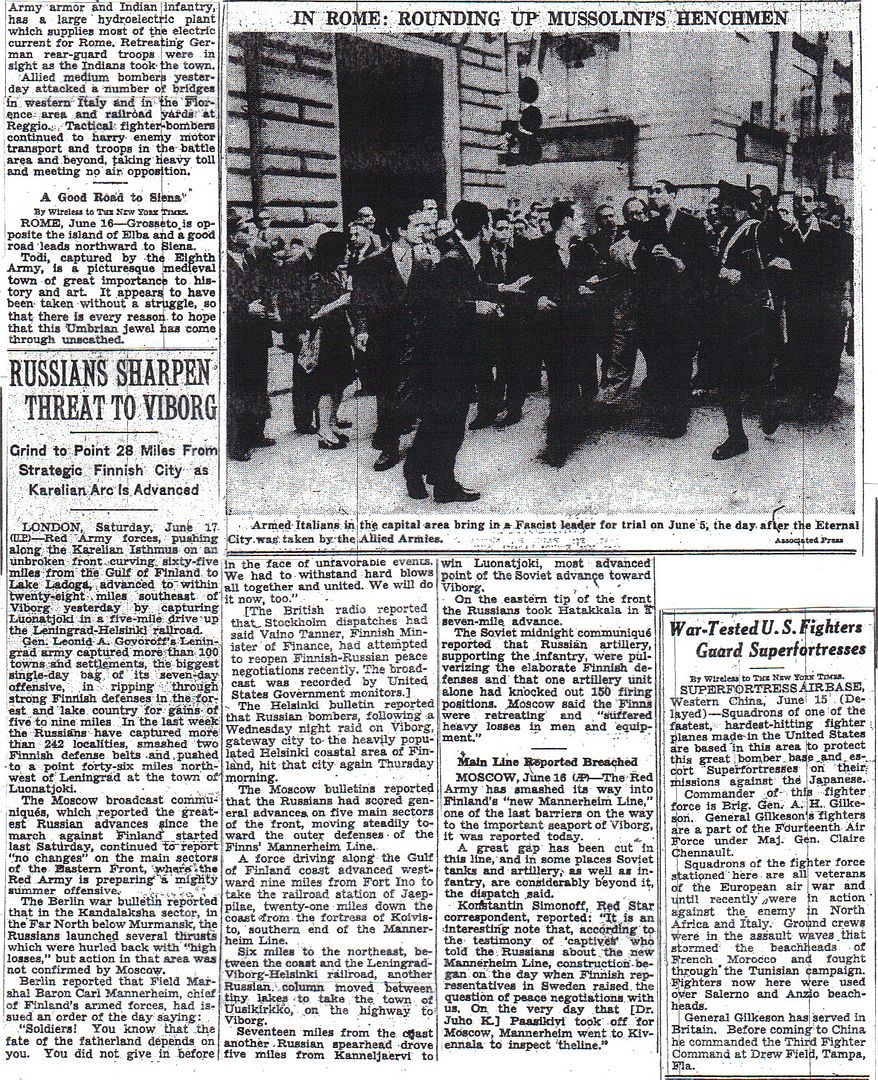
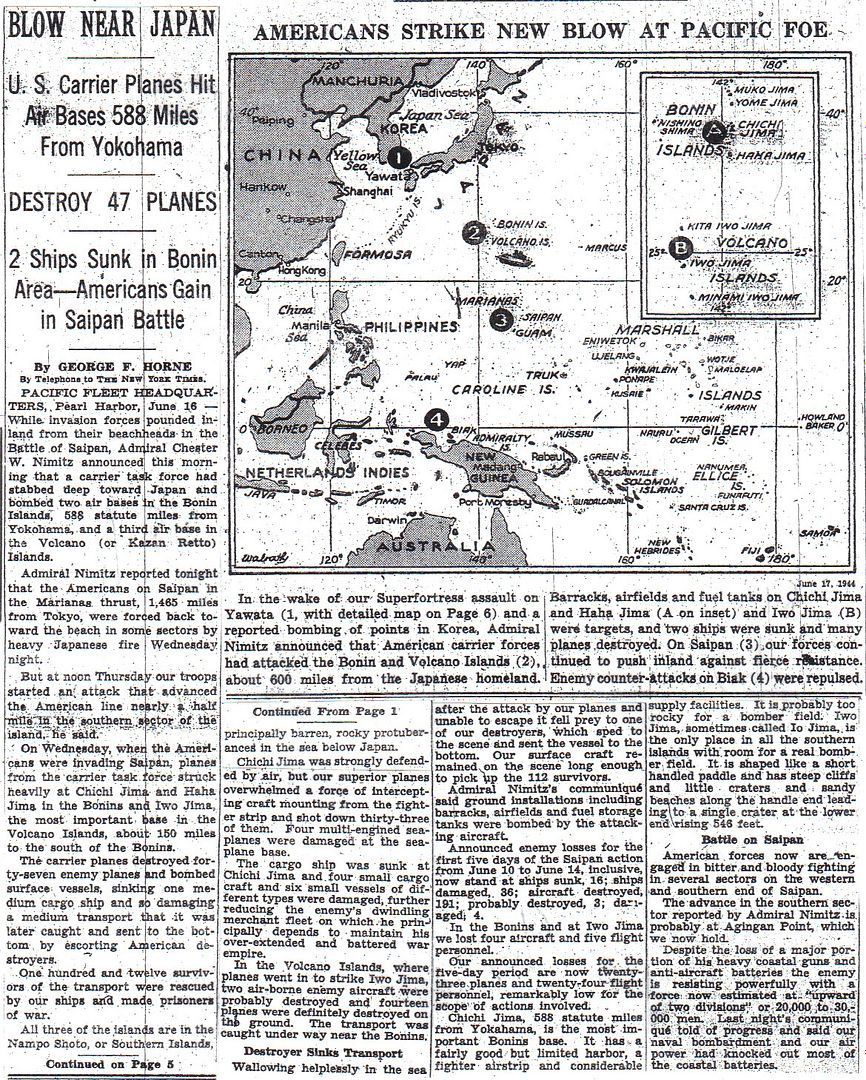
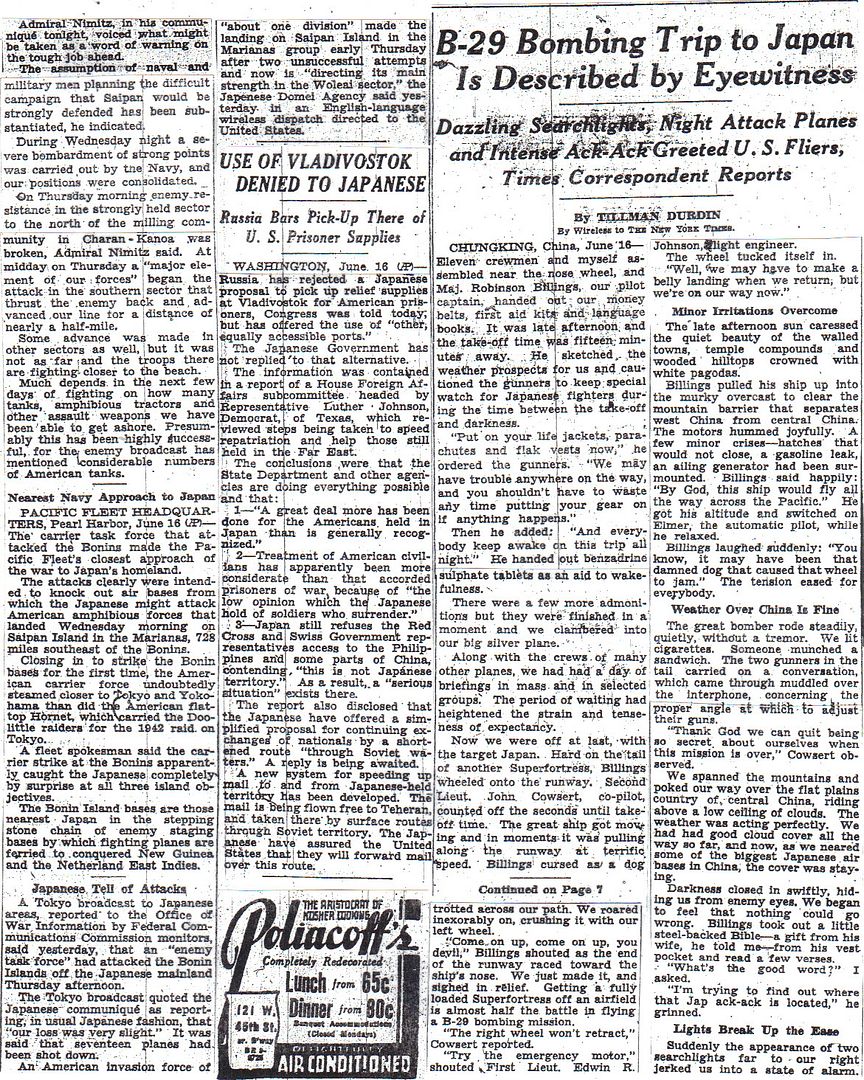
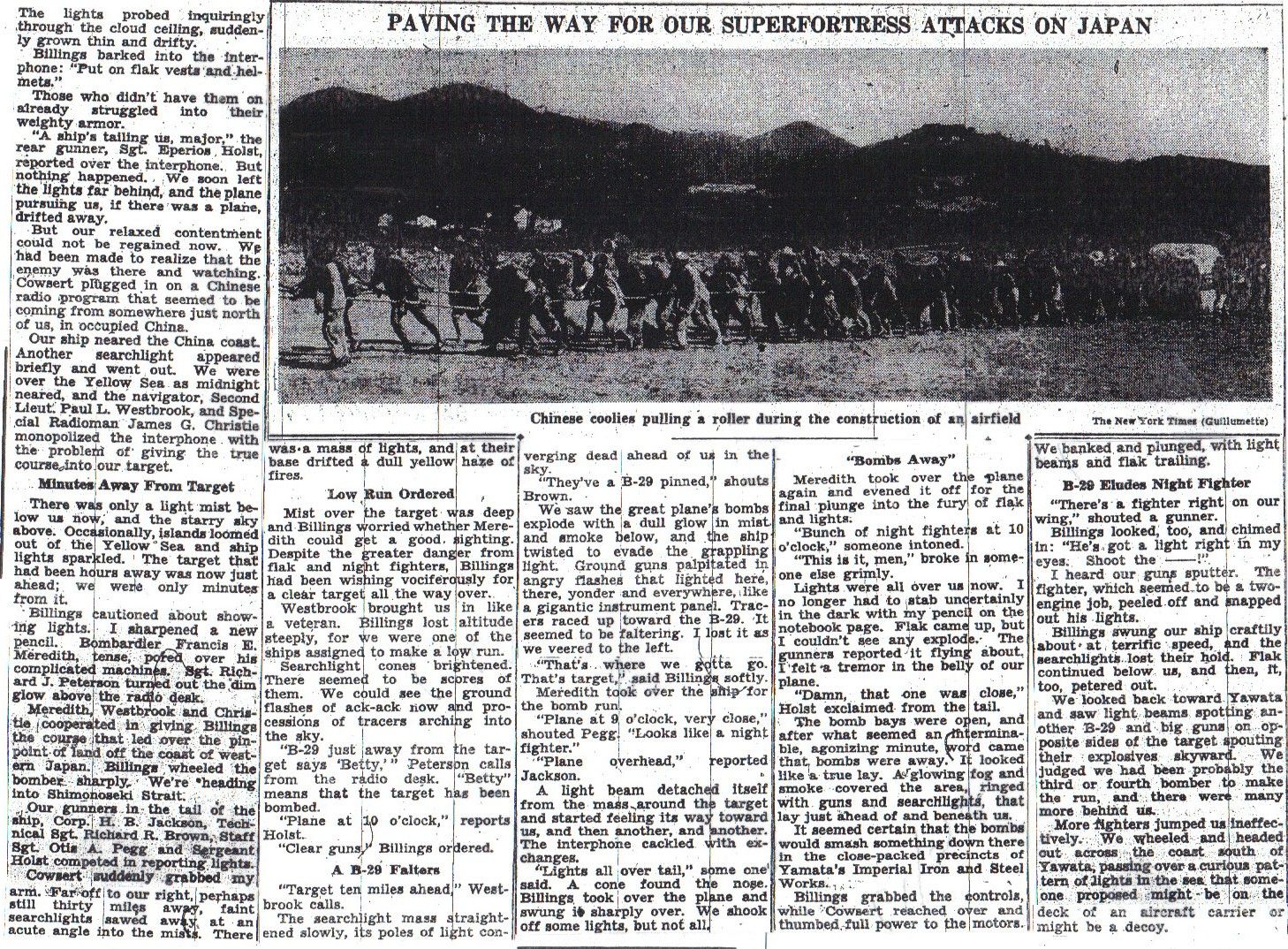
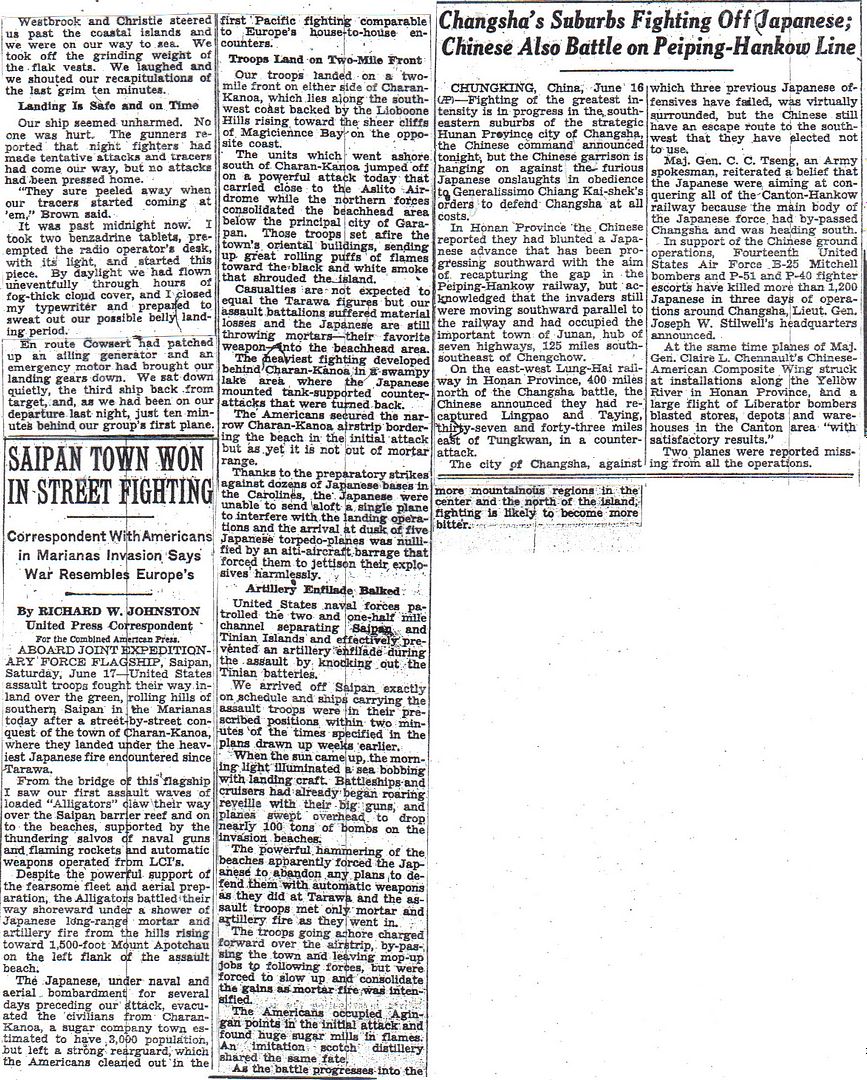
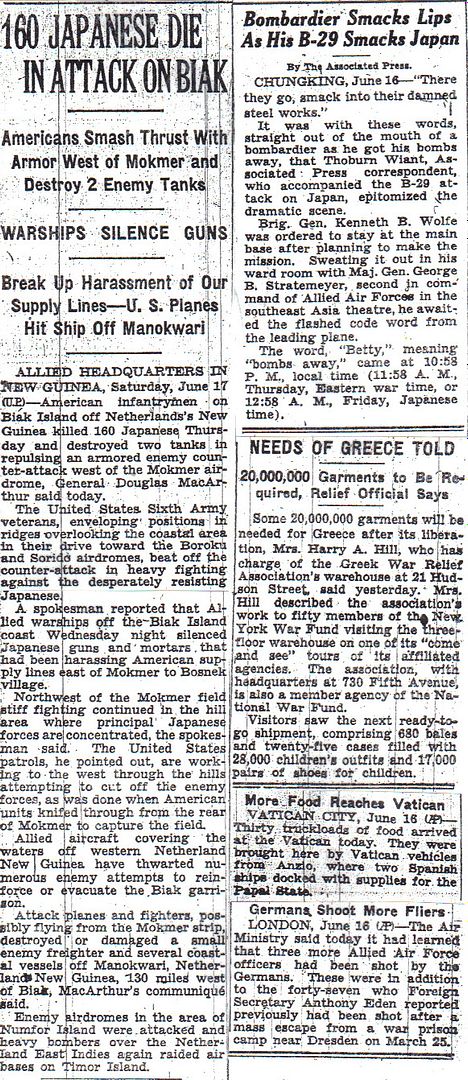
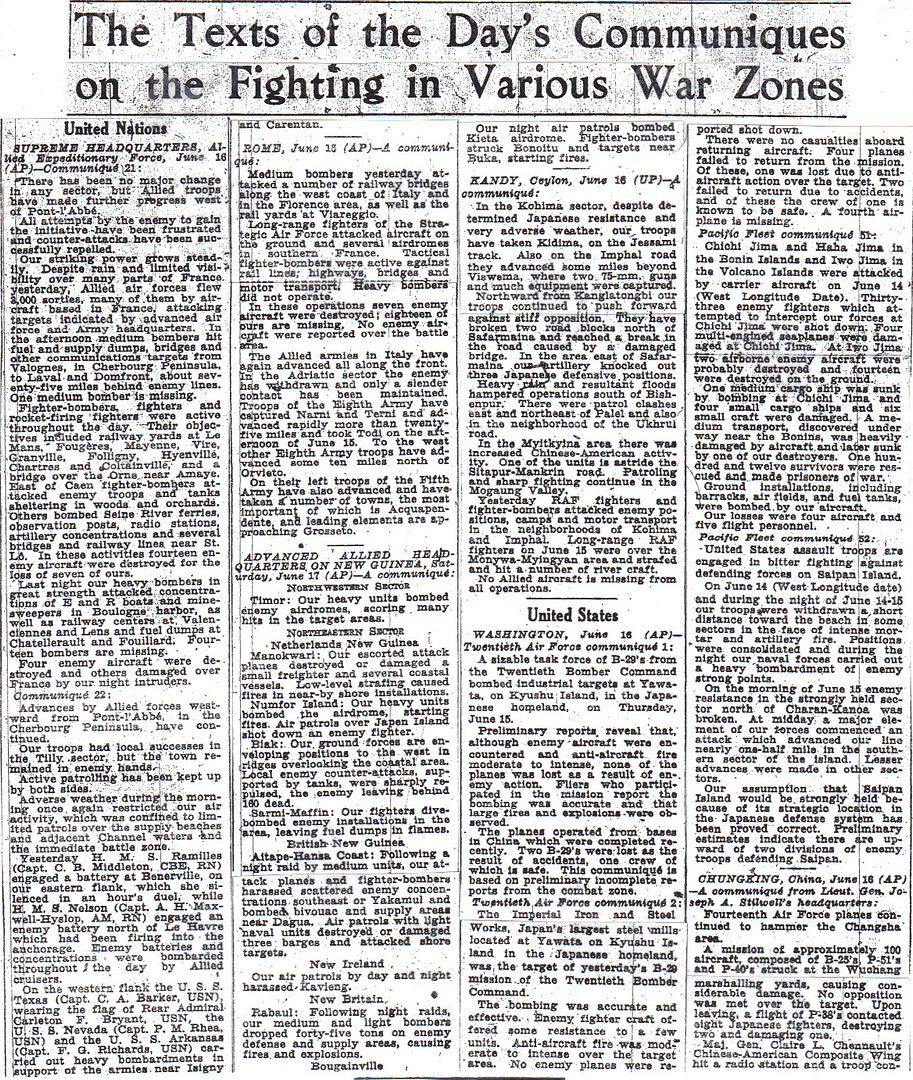
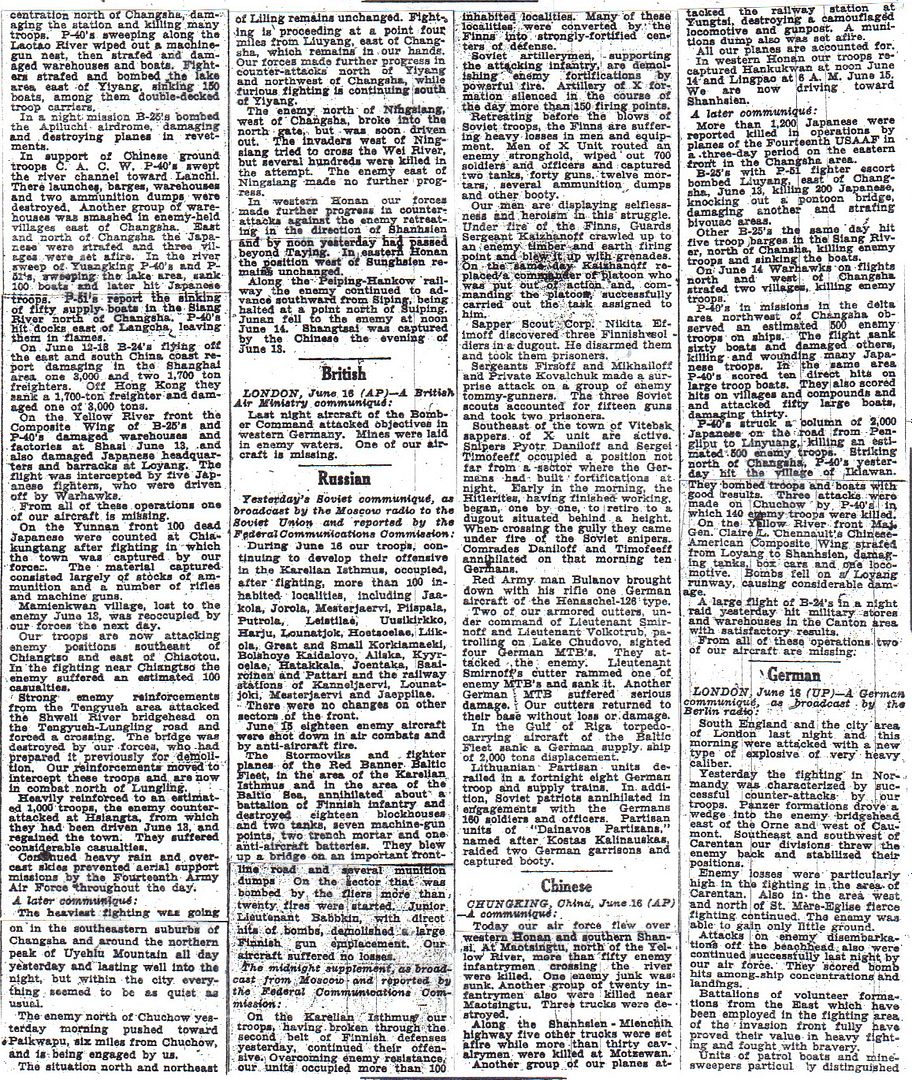
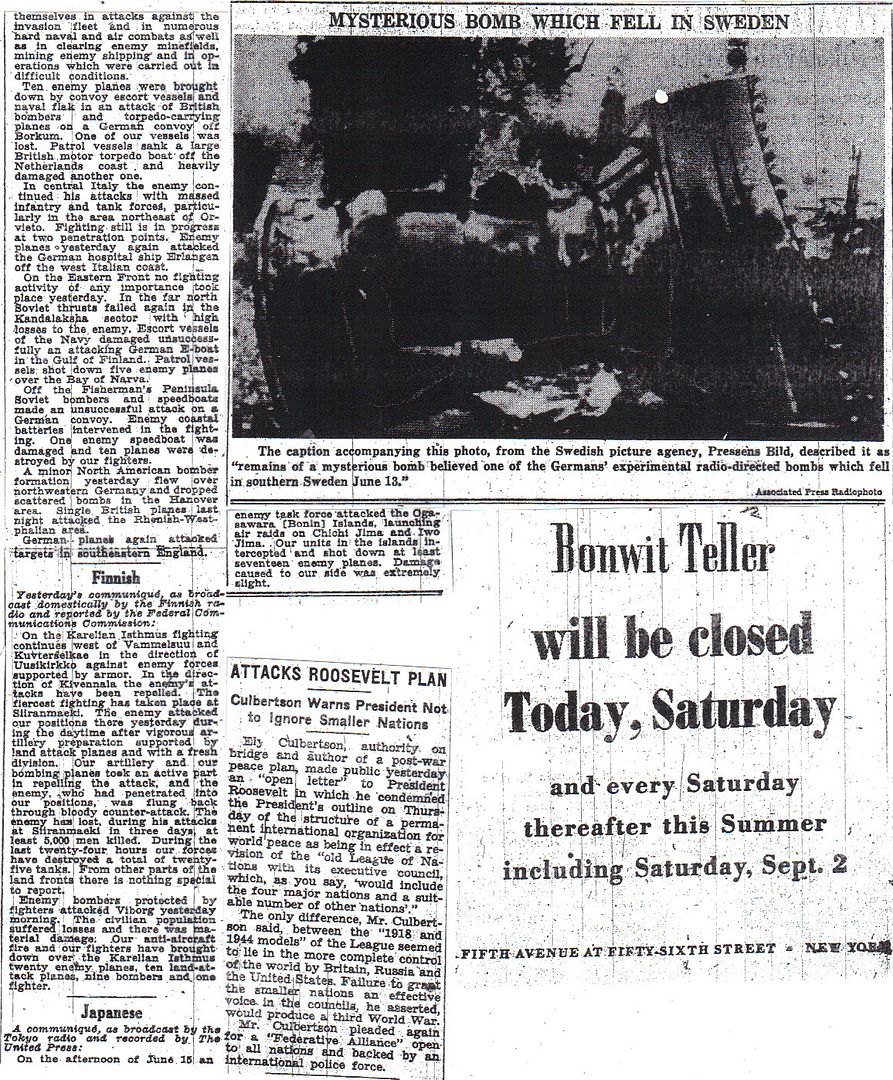
BBC – Frank Gillard Takes Cover
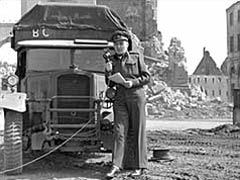
#1 – “I’ll Get By” - Harry James, with Dick Haymes (reissue of 1941 recording)
#2 – “I Love You” – Bing Crosby
#3 - “I’ll Be Seeing You” – Bing Crosby
#4 – “San Fernando Valley” - Bing Crosby
#5 – “Long Ago (and Far Away” – Dick Haymes, with Helen Forrest
#6 - “G.I. Jive” – Louis Jordan
#7 - “Long Ago (and Far Away” – Jo Stafford
#8 - “Amor” – Andy Russell
#9 - “Holiday for Strings” – David Rose
#10 - “Milkman Keep Those Bottles Quiet” – Ella Mae Morse
http://www.onwar.com/chrono/1944/jun44/17jun44.htm#
Americans cut off Contentin Peninsula
Saturday, June 17, 1944 www.onwar.com
On the Western Front... The US 1st Army cuts off the Contentin Peninsula. The US 9th Division (part of US 7th Corps) reaches the west coast to the north and south of Barneville. German divisions isolated to the north are not permitted to attempt to break out.
In Occupied France... Hitler meets with Rundstedt, Commander in Chief (West), and Rommel, commanding Army Group B. Both Field Marshals seek a withdrawal to more defensible positions inland. Hitler refuses to allow a retreat in Normandy. He suggests that the V1 bombing of Britain will force it out of the war.
In Italy... British 8th Army advance beyond the Chieti River along the Adriatic coast. The Polish 2nd Corps replaces the British 10th Corps in the line. Meanwhile, the French 9th Colonial (Senegalese) Division (General de Lattre) lands on Elba Island.
In the Mariana Islands... The US 27th Infantry Division lands on Saipan to reinforce the American beachhead.
In the Philippine Sea... The carriers led by Admiral Clark and the rest of the main US carrier forces sail for a rendezvous to the west of the Mariana Islands.
http://www.etherit.co.uk/month/thismonth/17.htm
June 17th, 1944 (SATURDAY)
UNITED KINGDOM: London: Germany’s long-threatened pilot-less planes or flying bombs are now falling thick and fast on London and south-east England. They first arrived four days ago, but a full-scale attack was only announced yesterday by Herbert Morrison, who claimed that damage was “relatively small”. No so: it is now becoming severe. According to figures issued at 6am today, 18 people have died and 166 have been injured in flying-bomb explosions since the first six casualties in Bethnal Green, in London, on 13 June. Yesterday 73 fell on Greater London, and today 24 people died in a single blast in a London pub.
The new weapon, today christened “V1” (V for Vergeltungswaffe - Reprisal Weapon) by Hitler, is a low-flying bomb launched from the Pas-de-Calais, fitted with stubby wings and a primitive pulse jet engine which is programmed to cut out over London. The V1 then nosedives silently to earth in 15 seconds with its warhead of nearly a ton of explosive. The damage can cover a quarter of a mile in radius, mainly by blast. Windows are shattered, and debris lacerates anyone upright in the vicinity. Many are buried alive. The most demoralizing factor is the moment when the engine cuts out. People stare in silence and then fling themselves flat to wait for the explosion. The V1s are being called “doodlebugs” or “buzz bombs” for the drone of their engines.
The USAAF’s Eighth Air Force in England flies three missions against targets in France, primarily airfields; two B-17 Flying Fortresses are lost; fighters fly 1,027 sorties during the day and destroy 15 locomotives, train cars, trucks and other vehicles.
Mission 418: 232 of 332 bombers attack targets in FRANCE:
1. Of 174 B-17s, 52 hit Monchy-Breton Airfield, 31 hit a railroad bridge at Noyen, 18 hit Chateaudun Airfield and 18 hit Villiers/L’Eveque Airfield; two B-17s are lost; escort is provided by 43 P-38 Lightnings, 39 P-47 Thunderbolts and 90 P-51 Mustangs; they claim 1-0-0 Luftwaffe aircraft; one P-51 is lost.
2. Of 158 B-24s, 28 hit Laval Airfield, 26 hit Guyancourt/Caudron Airfield, 18 hit Le Mans/Arnage Airfield, 17 hit Bretigny Airfield, 12 hit Brunnelles, one hit Melun Airfield, one hits Dreux, one hits St Valery and one hits a target of opportunity; escort is provided by 87 P-47s and 170 P-51s; they claim 2-0-1 Luftwaffe aircraft in the air and 3-0-0 on the ground.99 P-38s fly fighter-bomber missions against railroad bridges at Corbie and Peronne; four P-38s are lost.
Mission 419: Of 312 B-24s dispatched, 80 hit Angers Airfield, 75 hit Laval Airfield, 55 hit Tours Airfield, 38 hit Essay airstrip, 25 hit Lonray airstrip and one hits LeMans; one B-24 is lost; escort is provided by 122 P-47s and 148 P-51s; a P-51 is lost. 49 P-38s and 39 P-47s, escorted by 47 P-38s, make fighter-bomber attacks on Corbie-Peronne railroad bridges; two P-38s are lost.
Mission 420: Nine B-17s drop leaflets in France during the night.
The USAAF’s Ninth Air Force in England dispatches 265 B-26 Marauders to attack fuel dumps, a bridge and a railway line south of the battle area; 1,300+ fighters fly escort and top cover, and strafe and bomb troop concentrations, military vehicles, bridges, gun emplacements, tanks and other tactical targets.
FRANCE: Rommel, Rundstedt and Hitler meet at Soissons in the underground bunker built for the Führer in 1940, when he talked of invading Britain. Hitler was pale and haggard; hunched on a stool, he fiddled with his glasses as Rommel said that the struggle was hopeless against Allied superiority in the air, at sea and on land. At least, Rommel argued, they should pull back out of range of the Allies’ devastating naval guns. The Führer would have none of it. He blamed the two field marshals for the success of the Allied landings, and dismissed Rommel’s complaints that fuel shortages and enemy fighter-bomber attacks ruled out a major German offensive.
They talked from 9am to 4pm, with a lunch of rice and vegetables, which Hitler wolfed down with an array of pills. The Führer promised that the V-1’s will force Britain out of the war. There were “masses of jet fighters” on the way to drive the enemy out of the sky. At this point, Hitler was interrupted by Allied planes passing overhead. And then, shortly after von Rundstedt and Rommel departed, Hitler was shaken by a huge explosion. One of his own V1s had misfired and hit the bunker roof.
The US 9th Division reaches the west coast of Normandy.
GERMANY:
U-828 commissioned.
U-2509, U-3503 laid down.
U-779 launched.
FINLAND: In the Karelian Isthmus the Finnish troops start their withdrawal to the third line of defence, VKT-line. Their mission is to delay the enemy on their way, in order to gain time to transfer troops from the other parts of the Fenno-Soviet front. The 4th Division (Maj. Gen. Aleksanteri Autti) and 3rd Brigade have already arrived and are attached to Lt. Gen. Taavetti Laatikainen’s IV Corps, and the 17th Division (Maj. Gen. Alonzo Sundman) and 20th Brigade (Col. Armas Kemppi) are just disembarking from trains near Viipuri. From Maaselkä Ishmus Maj. Gen. Einar Wihma’s 6th Division starts its transfer to Karelia.
However, the aggressively advancing Red Army is not complying with the plans. The Finnish units, lacking the weapons to fight the heavy Soviet tanks, occasionally panic. On the southernmost part of the front, the 10th Division, which was already battered on the first days of the Soviet offensive, and the Cavalry Brigade experience great difficulties, and the enemy breaks through their defences. Finnish 10th Division and Cavalry Brigade receive new commanders. Col. Kai Savonjousi [Col. Kai Savonjousi was the first student of the Military Academy (established in 1919) to receive a divisional command. Another example of a succesful commander who made his career in summer 1944 was commander of the 2nd Division Maj. Gen. Armas-Eino Martola. He became a corps commander in July, and retired a lieutenant general after the war. He war promoted to General of Infantry in retirement in 1982] (one of the resourceful and successful commanders who rose to the occasion) replaces Maj. Gen. Jussi Sihvo as commander of the 10th Division, and Col. Urho Tähtinen replaces Maj. Gen. Lars Melander as commander of the Cavalry Brigade, which at the same time is subordinated to Col. Savonjousi’s 10th Division. He managed to infuse the battered units under his command with new spirit, and only few days later it was Col. Savonjousi’s men who repelled the first Soviet attempts to advance west after the capture of Viipuri. They start a disorganized retreat, and units of the Armoured Division are sent to reinforce them. On the left flank of the IV Corps the 3rd Brigade and 4th Division are fighting in Summa, the famous battlefield of the Winter War.
One veteran later remembered the impression made by Col. Savonjousi. At the time he was a private in the Infantry Regiment 1 of the 10th Division, a unit that had been in the center of the Soviet assault on the first days of the offensive, and suffered greatly in the retreat accross the Isthmus. Col. Savonjousi arrived to inspect the unit during the days when battles after the loss of Viipuri raged. After walking past the assembled men, he held a speech. As reported by the veteran 38 years later: “From here on we won’t retreat, he said, because we can’t. On the next line there are our mothers, sisters, children and parents, whole open heart of Finland. Here we die. I have come here to die. We are through with running, my good men. Now it’s again time to be a Finnish defender of [one’s] country. If someone tries to run, I will myself be there holding him, that’s my lot.” It impressed the men. “It was no militarist speaking, but a soldier and sensible realist, a sober man, who had been given a mission.” After the war Savonjousi had a succesful career, rising to the rank of lieutenant general (a very high rank in a peace-time army where there’s only one four-star officer in active service at a time).
To the north, on the southern shore of Lake Ladoga Lt. Gen. Hjalmar Siilasvuo’s III Corps has so far been spared the full fury of the Soviet offensive. Now it also starts to withdraw towards the VKT-line. Its 18th Division (Maj. Gen. Paavo Paalu) has been transferred to act as reserve near Viipuri, and it had received Maj. Gen. Armas-Eino Martola’s distinguished 2nd Division, which had just repelled three days of Soviet attacks in Siiranmäki. Unlike its neighbour, the III Corps’s withdrawal largely goes as planned, though the 2nd Division has to fight fierce delaying actions on its way.
Oberstleutnant Kurt Kuhlmey’s Stukas and Fw 190’s start arriving at the Immola airfield in southern Finland. The unit has been formed out of units in Lapland and Baltic region, and consists of 32 Stukas and 30 Fw 190 fighter-bombers.
ITALY: The French 9th Colonial Division lands on the island of Elba.
KURILE ISLANDS: 12 B-25s fly three air missions for a Naval Task Force on withdrawal, following the shelling of Kurabu Cape installations on Paramushiru Island.
MARIANAS ISLANDS: After heavy preliminary bombardment by the US Navy yesterday, the US V Amphibious Corps (Marines) has stormed ashore on the Japanese-held island.
With an armada of 535 fighting ships and transports carrying 127,000 US soldiers and marines, the Marianas operation is the biggest amphibious assault of the Pacific War. Coming within two weeks of the Normandy invasion, it highlights the enormous combat resources now available to the Allies.
The marines headed for the beaches of Saipan at 7am on 15 June. They went ashore in a four-mile long phalanx of 600 amphibious craft. Facing them were 32,000 Japanese troops, but by tonight the beach-head was secure and the US forces are consolidating their position. Japanese leaders realize that defeat here is inevitable, but pride compels them to carry on to the bitter end.
Today, the 165th mounted three attacks and reached the edge of the airfield by dusk while the 105th Infantry Regiment and the 27th Infantry Division headquarters came ashore.
IJN aircraft mount several attacks against U.S. shipping in the Marianas:
At about 1750 hours local, five torpedo bombers, Nakajima B5N Navy Type 97 Carrier Attack Bombers, Allied Code Name “Kate,” and one night fighter, a Nakajima J1N1-S Navy Type 2 Gekko, Allied Code Name “Irving,” from Truk attack landing craft east of Saipan. One infantry landing craft (LCI) is sunk while three “Kates” are shot down by AA fire.
Between 1850 and 1912 hours local, 17 Kugisho D4Y Navy Carrier Bombers Suisei, Allied Code Name “Judy,” 31 Mitsubishi A6M Navy Type 0 Carrier Fighters, Allied Code Name “Zeke,” and two P1YN Navy Bombers, based on Yap, attack Task Force 52 escort aircraft carriers The carriers scramble 46 FM Wildcats but give them the wrong vector taking them out of the action. AA fire from the ships down several D4Ys and both P1Ys. The escort aircraft carrier USS Fanshaw Bay (CVE-70) is struck by a bomb that penetrates the after elevator and explodes in midair above the hanger deck, killing 14 and wounding 23. Fire breaks out and the fire main is ruptured, flooding several compartments aft. In just under an hour, the damage was brought under control, but the ship is listing 3 degrees to port and settles 6-feet (1.8 m) by the stern.
After controlling the fires, the ship sets sail for Pearl Harbor and battle damage repairs.
Japanese air attacks against U.S. naval ships supporting the invasion of the Marianas Islands commence today. At about 1750 hours, five Nakajima B6N Navy Carrier Attack Bomber Tenzans, Allied Code Name “Jill,” and one Nakajima J1N1-S Navy Night Fighter Gekko, Allied Code Name “Irving,” based on Truk Atoll attack landing craft east of Saipan; one LCI is destroyed and three B6Ns are shot down. At about 1830 hours, 17 Yokosuka D4Y Navy Carrier Bomber Suiseis, Allied Code Name “Dot,” 31 Mitsubishi A6M Navy Type 0 Carrier Fighters, Allied Code Name “Zeke,” and two Yokosuka P1Y Navy Bomber Gingas, Allied Code Name “Frances,” based on Yap, damage an LST and then begin an attack on the escort aircraft carriers of Task Force 52 between 1850 and 1912 hours. The carriers launch 46 Eastern Aircraft FM Wildcats but they are given an incorrect vector and miss the Japanese aircraft.
Gunners on the ships shoot down several “Dots” and both “Frances’” but a bomb seriously damages USS Fanshaw Bay (CVE-70), At 2115 hours, a US submarine reports that a large force of Japanese ships is headed east toward the Marianas.
The USAAF’s Thirteenth Air Force dispatches 41 B-24s to bomb Truk Atoll, hitting targets on Eten and Dublon Islands.
PACIFIC OCEAN: Allied CINCPAC COMMUNIQUÉ NO. 53, United States Marines supported by elements of an Army Infantry division have improved their positions on Saipan Island, and are driving forward toward Aslito airdrome.
Harassment of our beachheads by enemy mortar fire has been considerably reduced.
On the night of June 14 (West Longitude Date) enemy torpedo planes launched an attack against our carrier force, but were repulsed without damage to our ships. Our heavy surface units bombarded Guam Island on June 15.
Liberators of the Eleventh Army Air Force bombed Matsuwa, Paramushiru and Shimushiru on June 14. Five enemy aircraft were airborne near Matsuwa but only one attempted to attack our force, and did no damage. Fourteen enemy fighters appeared over Paramushiru and several made attacks causing damage to one of our planes. One enemy fighter was probably shot down and an enemy medium bomber was damaged. Ventura search planes of Fleet Air Wing Four also bombed Paramushiru and Shimushu on June 14. Fifteen enemy fighters attacked our force, causing minor damage to several of our aircraft.
Shimushiru was again attacked by Eleventh Army Air Force Liberators on June 15.
Army, Navy and Marine aircraft of Central Pacific Air Forces bombed objectives in the Marshall Islands and Eastern Caroline Islands on June 13 and 15 (West Longitude Date.)
CINCPAC COMMUNIQUÉ NO. 54, JUNE 17, 1944
United States Marines and Army troops advancing east across the southern portion of Saipan Island, made gains averaging 1500 yards during the night of June 15-16 and on June 16 (West Longitude Date).
The area now held by our forces extends from a point just south of Garapan for a distance of approximately five and one half miles to Agingan and extends inland two miles at the point of deepest penetration. Our forces have captured Hinashisu due east of Lake Susupe.
Our positions were under sustained enemy fire during the night of June 15-16, and before dawn on June 16 the enemy launched a determined counter-attack. This attack, which was broken up, cost the enemy heavily in lives and destroyed more than 25 enemy tanks.
Early in the morning of June 16 our troops launched the offensive which resulted in general advances. Some of our forward echelons penetrated the Naval air base at Aslito Airdrome but were later withdrawn under severe enemy fire.
During the action on June 16 our aircraft bombed and strafed enemy positions, and during the night of June 15-16 enemy strong points were shelled by our ships.
On June 15 one of our destroyer transports encountered five enemy coastal cargo ships and sank them. Twenty-nine survivors were rescued and made prisoners of war.
CINCPAC PRESS RELEASE NO. 448, As the South Pacific has become relatively quiet, Admiral William F. Halsey, Jr., U. S. Navy, has been relieved of command of the South Pacific Area and the South Pacific Force. He will henceforth command the Third Fleet which will operate in the Pacific Ocean in the same way that the Fifth Fleet is operating under command of Admiral Raymond A. Spruance, USN. (Denis Peck)
CANADA: Corvette HMCS Cobourg arrived Halifax from builder Midland Ontario.
Patrol vessel HMCS Grizzly paid off.
Corvette HMCS Belleville launched Kingston, Ontario.
U-737 set up an automatic weather station on Bear Island.
U.S.A.:
Large cruiser USS Alaska commissioned.
Destroyer escort USS Robert F Keller commissioned.
Destroyer escort USS French launched.
ICELAND declares full independence and became a republic.
ATLANTIC OCEAN: U-423 (Type VIIC) is sunk northeast of the Faroes, in position 63.06N, 02.05E, by depth charges from a Norwegian Catalina aircraft (Sqdn. 333/D). 53 dead (all crew lost). (Alex Gordon)
Two crewmembers of U-853 were killed in an attack by aircraft from USS Croatan.
From back in the day a Freeper Foxhole on the USS Alaska.
http://www.freerepublic.com/focus/vetscor/1698603/posts
Regards
alfa6 ;>}
Homer, you dog.
I was going to post the same information from Liddel Hart’s “The Rommel Papers,” but it’s all the same. In fact, I wouldn’t be surprised if Shirer used “The Rommel Papers” as his reference for this passage.
All that scanning and cropping as I rushed out the door this morning....
(Just kidding Homer. I appreciate all of your work. These daily threads are the highlight of my day).
We’ll hear more from Cavalla in the coming days. And I will cut and paste, or link, to a very fine article about it. And this time, Homer, I don’t think you’ll scoop me...
Note footnote #20 in the 3rd paragraph of my excerpt.
"Ibid. [Speidel, Invasion 1944] pp. 93-94, on which this account is largely based. Gen. Blumentrit, Rundstedt's chief of staff, has also left an account, and there is additional material in The Rommel Papers,, ed. by Liddell Hart, p. 479."
They were absolutely beautiful ships, but by 1944 there was no real purpose for them. There were only two reasons they were built:
1. We had false intelligence the Japanese were building something similar as a long range commerce raider, and;
2. Because we could.
While the rest of the warring powers scrambled to build the weapons they desperately needed, we built stuff we didn't need just because we could.
.jpg) |
| IU Archives |
| Photo of a painting of Ernie Pyle at a soldier’s grave. |
Multimedia |
|
NORMANDY BEACHHEAD, June 17, 1944 – In the preceding column we told about the D-day wreckage among our machines of war that were expended in taking one of the Normandy beaches. But there is another and more human litter. It extends in a thin little line, just like a high-water mark, for miles along the beach. This is the strewn personal gear, gear that will never be needed again, of those who fought and died to give us our entrance into Europe. Here in a jumbled row for mile on mile are soldiers’ packs. Here are socks and shoe polish, sewing kits, diaries, Bibles and hand grenades. Here are the latest letters from home, with the address on each one neatly razored out – one of the security precautions enforced before the boys embarked. Here are toothbrushes and razors, and snapshots of families back home staring up at you from the sand. Here are pocketbooks, metal mirrors, extra trousers, and bloody, abandoned shoes. Here are broken-handled shovels, and portable radios smashed almost beyond recognition, and mine detectors twisted and ruined. Here are torn pistol belts and canvas water buckets, first-aid kits and jumbled heaps of lifebelts. I picked up a pocket Bible with a soldier’s name in it, and put it in my jacket. I carried it half a mile or so and then put it back down on the beach. I don’t know why I picked it up, or why I put it back down. Soldiers carry strange things ashore with them. In every invasion you’ll find at least one soldier hitting the beach at H-hour with a banjo slung over his shoulder. The most ironic piece of equipment marking our beach – this beach of first despair, then victory – is a tennis racket that some soldier had brought along. It lies lonesomely on the sand, clamped in its rack, not a string broken. Two of the most dominant items in the beach refuse are cigarets and writing paper. Each soldier was issued a carton of cigarets just before he started. Today these cartons by the thousand, water-soaked and spilled out, mark the line of our first savage blow. Writing paper and air-mail envelopes come second. The boys had intended to do a lot of writing in France. Letters that would have filled those blank, abandoned pages. Always there are dogs in every invasion. There is a dog still on the beach today, still pitifully looking for his masters. He stays at the water’s edge, near a boat that lies twisted and half sunk at the water line. He barks appealingly to every soldier who approaches, trots eagerly along with him for a few feet, and then, sensing himself unwanted in all this haste, runs back to wait in vain for his own people at his own empty boat. * Over and around this long thin line of personal anguish, fresh men today are rushing vast supplies to keep our armies pushing on into France. Other squads of men pick amidst the wreckage to salvage ammunition and equipment that are still usable. Men worked and slept on the beach for days before the last D-day victim was taken away for burial. I stepped over the form of one youngster whom I thought dead. But when I looked down I saw he was only sleeping. He was very young, and very tired. He lay on one elbow, his hand suspended in the air about six inches from the ground. And in the palm of his hand he held a large, smooth rock. I stood and looked at him a long time. He seemed in his sleep to hold that rock lovingly, as though it were his last link with a vanishing world. I have no idea at all why he went to sleep with the rock in his hand, or what kept him from dropping it once he was asleep. It was just one of those little things without explanation that a person remembers for a long time. * The strong, swirling tides of the Normandy coastline shift the contours of the sandy beach as they move in and out. They carry soldiers’ bodies out to sea, and later they return them. They cover the corpses of heroes with sand, and then in their whims they uncover them. As I plowed out over the wet sand of the beach on that first day ashore, I walked around what seemed to be a couple of pieces of driftwood sticking out of the sand. But they weren’t driftwood. They were a soldier’s two feet. He was completely covered by the shifting sands except for his feet. The toes of his GI shoes pointed toward the land he had come so far to see, and which he saw so briefly.  |
Thank you for posting this. Pyle does something very special here, illuminating to his readers the individual human sacrifices in a most poignant style. My monitor sure is blurry.

Are the orders Rommel refers to here the ones about not giving up one square of ground?
Regarding the end sentence referring to the armored divisions, that "When they finally arrived they were thrown in piecemeal and failed." This is the object of focus I've been engaged in for the past several days of organizing and typing a hand-written portion of the manuscript I PM'd you about. I've just yesterday finished typing a 14 page, first-person account of a single battlefield incident involving tanks. The 116th Inf. Regt./29th Div. is on the front line of the Normandy hedgerow fighting. In the lead position, a single squad from L Company finds themselves cut off. They encounter (for the first time)combat engineers of our armored division - a three man team, furiously trying to rig explosives in a hedgerow so a tank can come through. The engineers are performing their duty under withering enemy fire, with only this squad to lend cover. The squad, the engineers, and the lone platoon somewhere to their rear, are under withering fire...machine guns, hand grenades, mortar, a persistent enemy sniper, all directed in an intense defense against this maneuver.
This is the first tank our infantrymen at the front have ever seen in the hedgerows. One squad manages to provide enough cover for the 3-man team of engineers to complete the explosion of a segment of hedgerow large enough for a tank to come through. First, a single tank - almost immediately hit from above directly in its center is disabled. Not long after, a second tank comes through in the tracks of the first and meets the same fate. Finally a third tank, destroyed in exactly the same manner as the first two. These three tanks remain destroyed, now in an open field, as the survivors (two from the first tank, three from the second, and none from the third) manage to exit their tanks and retreat through the hedgerow from which they came. At the end of this maneuver, the 2nd Platoon of L Company is decimated, with perhaps only two survivors.
I'm trying to narrow in on where this encounter takes place, relying only on records of the 29th's morning calls and some of their after-action reports. The writer of the manuscript is evacuated and hospitalized on July 15th, 1944 as a result of this incident. He receives his first Purple Heart and a battlefield promotion to Sergeant while hospitalized, and prior to returning to the front on August 28, 1944.
In all of what appears to be your exhaustive research and extensive resources, is there any possiblity that you're aware of a resource that would track the trajectory of tanks from the beachhead to the hedgerows from which I might be able to map their progress (or more accurately, the lack of it), and possibly get a clearer picture of just where the incident described occurs?
Due to Hitler's pig-headedness Normandy will become a battle of attrition. The U.S. can afford to play - Germany cannot.
Sorry to say, my resources are not all that extensive. Happily, there are a number of regulars here who really know what they are talking about and might have what you need.
Dear Readers - lonevoice is working from the memoirs of his relative who landed in the second wave at Omaha Beach and would see extensive action through VE day. Any resources or other advice you can provide would be greatly appreciated.
Disclaimer: Opinions posted on Free Republic are those of the individual posters and do not necessarily represent the opinion of Free Republic or its management. All materials posted herein are protected by copyright law and the exemption for fair use of copyrighted works.